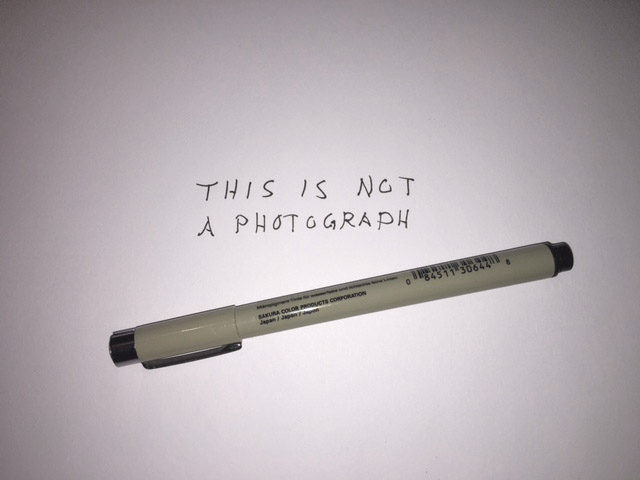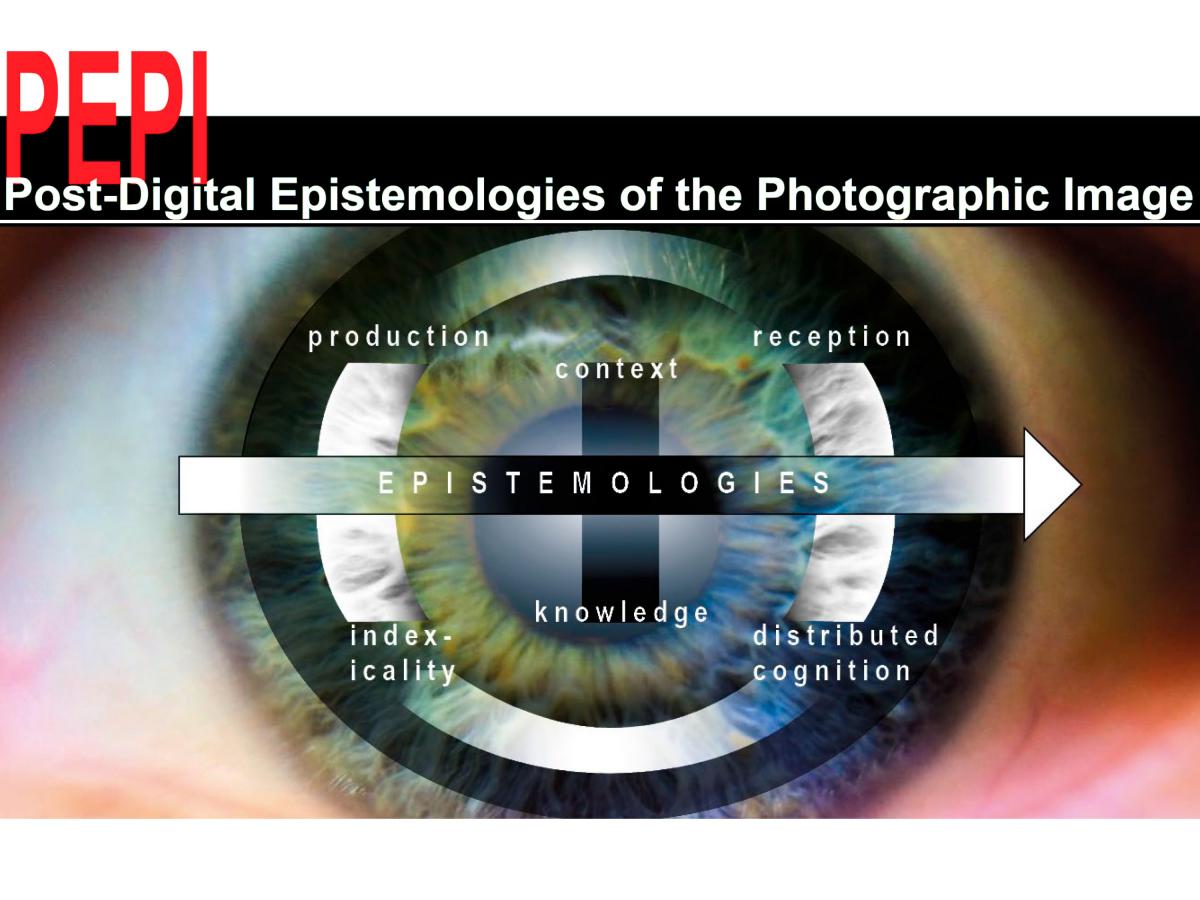Why do we trust pictures?
Post-doc researcher Tuula Närhinen and professor Mika Elo work in the four-year research project Post-Digital Epistemologies of the Photographic Image (PEPI) as part of the Academy of Finland’s MediaSociety-programme. The research looks at the epistemic within the photographic apparatus and studies the generation and distribution of images in the expanded field of photography. Ultimately, the research in KuvA sets out to remind us of the fact that both images and visual perceptions are not as unproblematic and self-evidently present to us as the everyday experience would perhaps suggest.

Studying the veracity of photographic images
In January 2019, two artist-researchers from KuvA joined a trans-disciplinary research project funded by the Academy of Finland. The Post-Digital Epistemologies of the Photographic Image (PEPI 2019-2022) addresses critically the trust in the photographic medium. We study the veracity of photographs in various contexts including ontological, sociological, and technological perspectives. The main research question is: How does a photographic image become accepted as a truthful description of reality in various cultural contexts of the (post-)digital era?
PEPI brings together six researchers from three different universities: Tampere, Helsinki and the Uniarts. The project is led by professor Janne Seppänen from the University of Tampere Journalism, Media and Communication Centre (COMET). The Tampere post-doc Jenni Niemelä-Nyrhinen stresses the context of the image as a criterion for its truthfulness. Their research challenges the alleged opacity of journalistic practices and strives to understand how news construct the impression of truth through visual and textual narratives.
The second research team consists of experimental psychologists from the Visual Cognition Research Group at the University of Helsinki. University researcher Jukka Häkkinen and post-doc Tuomas Leisti ask, how people judge the veracity of photographic images through rational processes and metacognition (metacognition = how aware are we of our own mind-set when we look at an image). The scientists will measure emotional responses to evaluate how the trust in visuals is being reflected against the person’s own judgements.
The Uniarts KuvA-team includes professor Mika Elo and post-doc Tuula Närhinen. Whereas the journalists study the media context, and the psychologists focus on the reception of images, we will address the photographic medium from the point of view of image production. Our main research question was formulated in the original application as follows: How is the human point of view constructed in the expanded field of photography? By the human point of view we understand the technologically mediated human condition defined by the use optical instruments and digital photographic techniques which operate in a quasi-autonomous way.

The omnipresence of electronic devices and the black boxing of digital technologies both accelerate the naturalisation of the photographic image and obscure its ontological status as a constructed artefact. Images and visual interfaces are generated by man-made technologies but most often we choose to go with the flow and to ignore their constructed nature.
Photographic practices cannot be considered transparent representations or mechanical reflections of the word. Instead, imaging techniques such as perspective drawings or photography function as epistemic tools that operate aesthetically. Images enact as world-making agencies and contribute to the generation of our visual Lifeworld. Photographs can literally transform the way we cognise and comprehend the world.
The motivation for our study derives from our belief that along verbal expressions, we find equally important to acknowledge aesthetic ways of meaning-making. Our work attempts to re-conceptualise the epistemic discourse around the technological hubris of VR, augmented reality (AR) and other more or less immersive photographic practices. We find this thematic angle highly relevant during the current period of media transition since aesthetic meaning making is ontologically inseparable from the embodied processes of its material constitution and medial translations.
We work in the field of artistic research – and accordingly, we make use of the visual register to argument about photographic images. In addition to written theoretical analyses, a substantial part our study consists of photographic experimentation and visual demonstrations. The research proceeds by devising experimental setups and producing renderings that provide the means for studying photographic manifestations by the act of looking i.e. through visual experience.
Mika Elo attempts to develop a media theoretical account of what he calls the distributed epistemologies of the photographic image. With that he means the digital networks where manifestations of human agency are fundamentally decentered, expanded and technologically mediated. His research describes the ways digital environments operate and how they introduce new discursive structures into the photographic discourse. For example, he describes in experiential terms, how multiple layers of metadata contribute to photographic affordances. Elo interprets the mechanisms of distribution which allow photographs to work as dynamic data objects that remain subject to fake, fiction and speculation.
Whereas Elo’s study reaches out to digital processes, Tuula Närhinen focuses on analogue phenomena such as photographic methods to fathom spatial depth. The human point of view is inherently binocular but normally we are not aware of the epistemic premises set by our body. Despite certain optical similarities, depth perception cannot properly be modeled with monocular photography.

It is important to understand that the stereoscopic depth we are grown familiar with is not the only option. There could be other renderings of 3d space based on different physical, sensor and motor abilities that accordingly would result in alternative visions of depth. For instance, how would the world look like seen through a pair of pictures taken several meters apart from each other – compared to the 5-6 cm which is the average distance between human eyes? Närhinen asks whether it would it be possible to create an impression of a giant’s gaze through hyperstereopsis – or to adopt the perspective of a Lilliputian?
In the first place, Närhinen’s experiment is designed to challenge binocular vision through alternative spatial depths, but she hopes that the study might also reveal some aspects of the immanent affordances provided by human body. Normally we remain unaware of the mechanisms that underpin our visual lifeworld. The stereographic explorations might contribute to understanding the dynamics of stereopsis and for instance, bear witness of the ways the retinal disparity affects the body schema of the observer.
At this stage, many questions remain open but for the moment it looks like one aspect of the research is clearly emerging and gaining more strength; in one way or another, the conception of a body is involved, and it seems to play a crucial role in our study of photographs.
KuvA research activities
This blog highlights the activities of the research unit and doctoral programme at the Academy of Fine Arts Helsinki | Tämä blogi esittelee Kuvataideakatemian tutkimusyksikön ja tohtorikoulutusohjelman tapahtumia ja toimintaa | I den här bloggen presenteras verksamheten och evenemangen vid Bildkonstsakademins forskningsenhet och doktorandprogram
Latest posts
Follow blog